Bath Abbey | The History
I first visited Bath over a decade ago, and I remember vividly seeing Bath Abbey for the first time. Luckily, I have since been back several times. I believe I can say confidently that there is nowhere like the Abbey. It is officially known as the Abbey Church of Saint Peter and Saint Paul. And it is a richly atmospheric place of worship which shows a premier example of Norman Perpendicular Gothic architecture. This architecture is a true testament to the blend of Anglo-Saxon, Norman and 19th-century cultures.
Why do I say this? Well, you can find exquisite columns of honey-gold stone, striking stained-glass windows and incredible fan vaulting ceilings. If you’d like to see something amazing, then Bath Abbey’s architecture will deliver that to you. And so will its history.
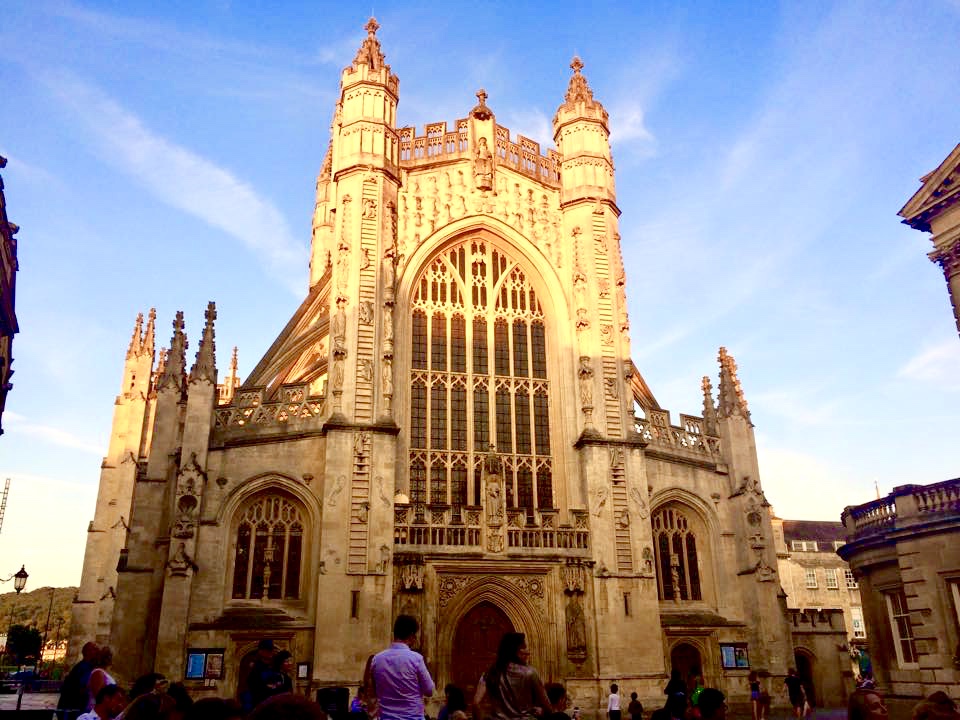
History Overview of Bath Abbey
Bath Abbey was the last great medieval cathedral built in England. The site of the Abbey has a history encompassing over 1,200 years. Throughout this period, there have been three different churches occupying the site since 757 AD. The first church built was the Anglo-Saxon monastery. However, it was later pulled down by the Normans. In 1090, the Normans built a large Norman Cathedral that lay in ruins by the late 15th century. Two hundred years later in the 1860s/70s, Sir George Gilbert Scott transformed the Abbey. He made it conform to his vision of Victorian Gothic architecture. All of which has left a remarkable building just waiting to be explored. Waiting to tell you its secrets!
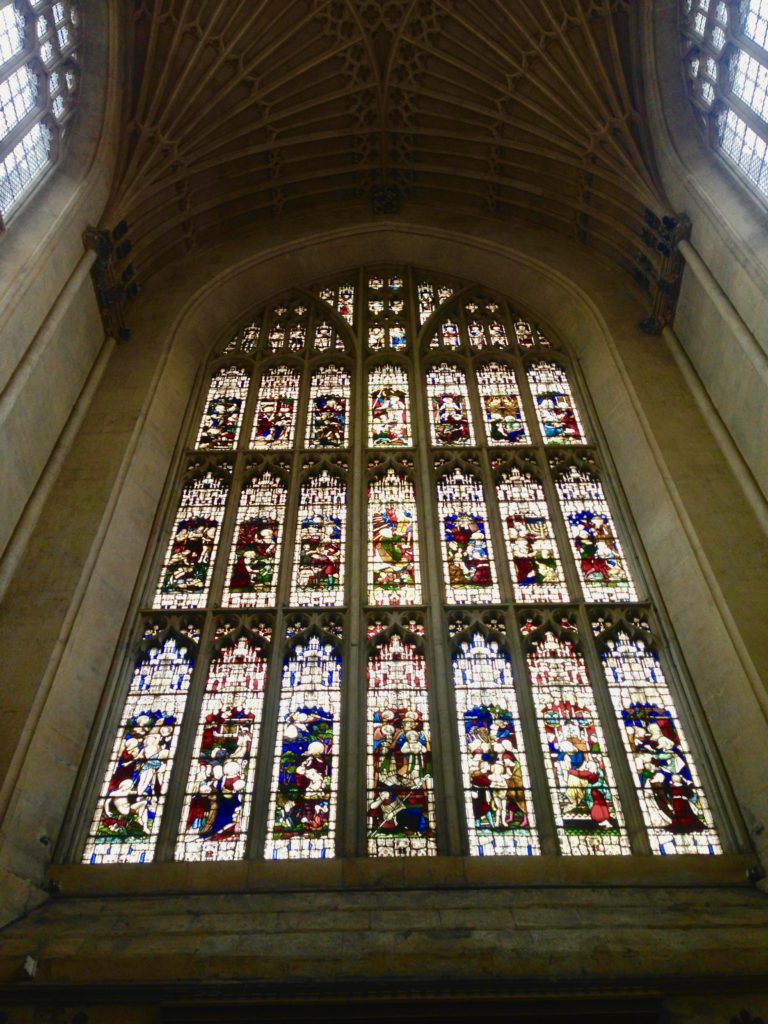
The Anglo-Saxon Origin of Bath Abbey
When researching Bath Abbey, it shocked me to learn that its history dates back to the Anglo-Saxon period. Its conception was in 757 AD. I never thought my immediate surroundings could be so old. It’s not like I live near Egypt’s temples or the sacred walls of Lisbon’s Jerónimos Monastery.
There is very little known about the Abbey’s early years or any archaeological evidence to support its size or even existence. Despite this, I am fascinated by the little we think we know. If anyone else is obsessed with the BBC’s ‘Last Kingdom,’ or the History Channels ‘Vikings’, then you too will love the Abbey’s history. You’ll devour the knowledge that historians believe a convent existed in this site after Osric, King of the Twice, granted the Abbess Berta financial aid in 675 AD.
A New Monastery
The women’s religious house soon became a monastery under the patronage of the Bishop of Worcester. And in keeping with the tradition of the Anglo-Saxon period – being wrought with hostility and tension – the monastic church was seized from the Bishop and rebuilt in 781 AD. This time, King Offa of Mercia had them dedicate the church to St. Peter. King Edwy is reported to have said that this monastery was “marvellously built”. With royal patronage, we can only imagine the building’s original splendour for a religious society.
Interestingly, King Edwy’s brother, Edgar, encouraged the monks to adopt the Benedictine Rule – to have them live, pray and work according to St. Benedict and to prefer nothing to the work of God. Edgar’s religious insistence, for me, is the beginning of Britain’s world and I can’t help but see that his vision continues in the Abbey of today as their worship, hospitality, and justice draws on our Benedictine Heritage.

The Abbey represents unity and peace
Not only does the Bath Abbey building tell us about Britain’s religious heritage but Edgar, who became King, is a figure who emblematically represents unity and peace. In the 959 AD, he established a long line of Wessex kings who unified England whilst single-handedly creating the governance and power of the monarchy we know now. This is most notable in his coronation service in 973 AD, which showed the authority and wealth of the royal family. This formed the basis of all subsequent coronation services right up to our Present Queen in 1953… Talk about shaping a country!!
Bath Abbey’s The Norman Architecture
After the Norman Conquest in 1066, there was a power struggle between the sons of William the Conqueror, following his death in 1087. The Victor, William Rufus, granted the city of Bath and Bath Monastery to the royal physician, John of Tours, who became Bishop of Wells in 1088. It was the Monastery’s wealth and the city’s mint that largely attracted Tours and as a result; he transferred the seat, or administration, of the bishopric to Bath Abbey, elevating it to cathedral status.
In doing so, Tours rebuilt the monastic church in the Norman architecture, hoping to improve his lands as he intended to replace the monastery church with a huge new cathedral. So ambitious was this construction that, by the time of John’s death in 1122, only half of the cathedral had been built. It is the architectural style Tours encouraged that reveals our nation’s history after the Norman invasion.
Archaeological excavations
The present cathedral is only as large as the Norman Cathedral’s nave, as the building was originally 330 feet long. Wessex Archaeological excavations reveal that much of the present Abbey’s foundations are made from Norman masonry. Some walls rest directly on top of the Norman cathedral’s remains. Additionally, we can find traces of architectural mastery in the Alphege chapel. In this chapel, there is a grille through which we can see the remains of Norman pillars. While other re-used pillars form part of the base of a pier for a later column.
In the Gethsemane chapel at the northeast end of the Abbey, an exquisite Norman arch is on display. Arches are a defining feature of Norman architecture, and Bath Abbey’s is built into the structure of the present wall. This grand archway evokes feelings of awe. I felt very privileged to be standing and witnessing the architectural magnificence. I couldn’t help but think it also functions as a romantic symbol of splendour and of the sublime.
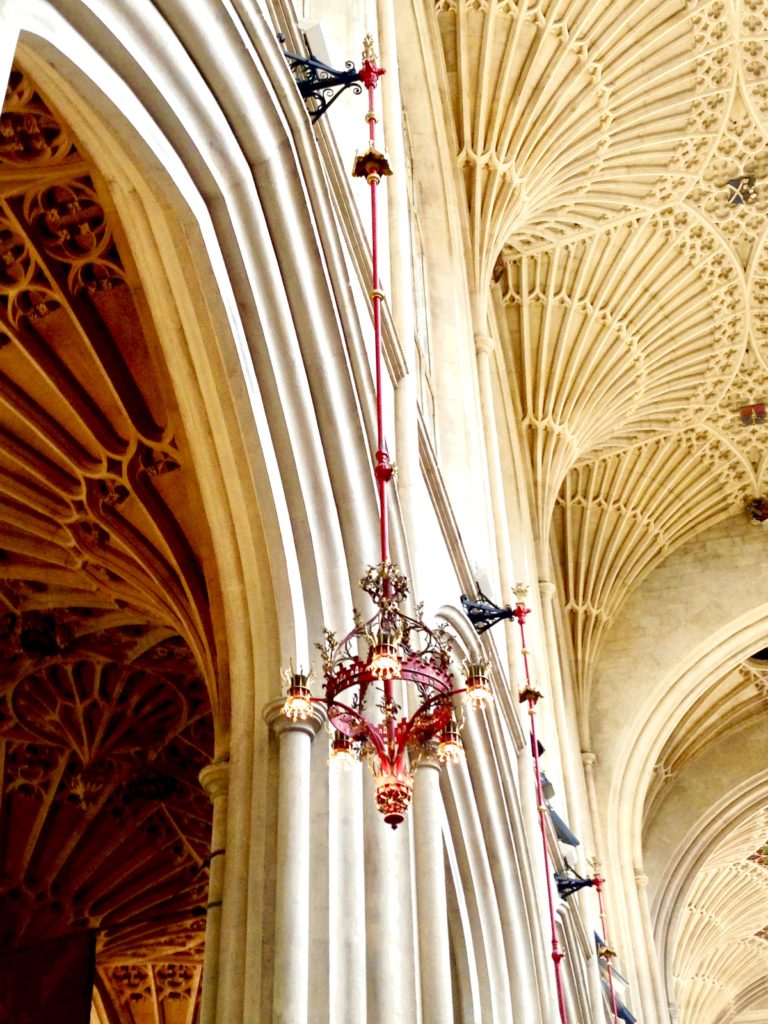
These architectural structures are a wonderful mixture of Romanesque and Gothic influences. These are epitomised in its longitude, side aisles and the geometrical and interlaced ornamentation that are supported by decorative fan vaulting ceilings. The fan vaulting, designed by Sir Gilbert Scott, dates from 1500 and is based on, but replaces the original wooden Norman ceiling.
Carving of saints and humans
The other Norman carvings depict saints or other holy figures that speak of the centrality of religion in medieval society. These carvings are dotted around the Abbey for aristocratic and commoners, literate and uneducated alike to see. It is a clever form of propaganda and way of governing the masses, having the well-known and devoted saints peer down on you, reminding you to uphold your religious vows and to avoid sin and temptation.
Another carving represents a bearded man with a distinctively large nose. According to the Archaeologists, this carving may have been a portrait, or self-portrait, of an individual, such as a mason who was involved in the cathedral’s construction. I’ve been to many Abbey’s, and this is the first one where I have seen carvings of mere mortals and I think it shows the community aspect to the Norman culture, the unity and respect they had for each other.
This is very telling, as the Normans would have had to band together after the Norman Conquest that predominantly saw them inserting their culture and way of life onto the Anglo-Saxons. However, despite this incredible insight into the Norman’s way of life, the Abbey fell into despair and decay after the Black Death in 1398.
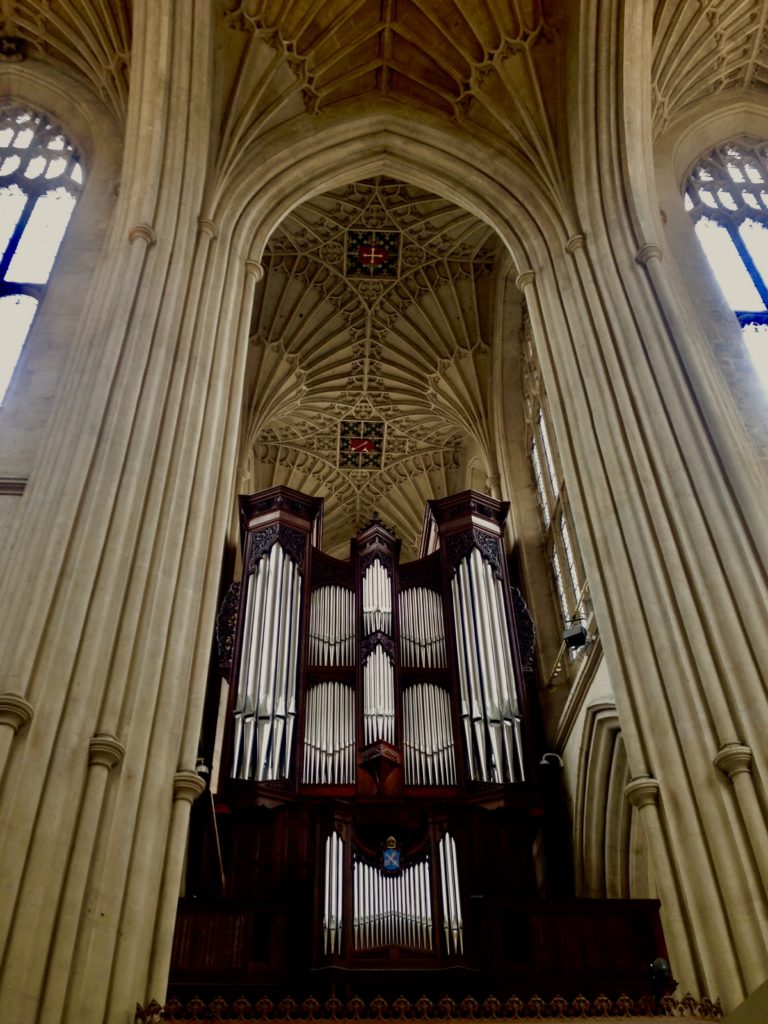
The Abbey Now: Since the 15th Century
It wasn’t until Oliver King, Bishop of Bath and Wells, who visited in 1499 that the Abbey’s Norman roots were restored. Whilst the Anglo-Saxons Benedictine rule and the Normans’ architecture gives historical insight, the Abbey’s immediate history is remembered through the life of a single man, Oliver King. In October 1500, he wrote to the Prior of Bath to explain that a large amount of the priory income would then be dedicated to the rebuilding of the Abbey.
The West Front
This led to the design of the West Front, with its unique ladders of angels ascending and descending from heaven. Records state that King said that this designed came to him in a dream. Additionally, the mitre, olive tree, and crown motif on his West Front are a blatant play on his name. Additionally, the statues either side of the main door is of St. Peter and St. Paul.
Historians have interpreted these sculptures as representing spiritual ascent through virtue of humility and descent through the vice of pride. They have also identified Christ as the Man of Sorrow and the Antichrist. This again speaks to the character of its designer and the religious teachings King would have narrated to the masses. Again, religion has played an enormous part in creating the Abbey and the way we remember the past.
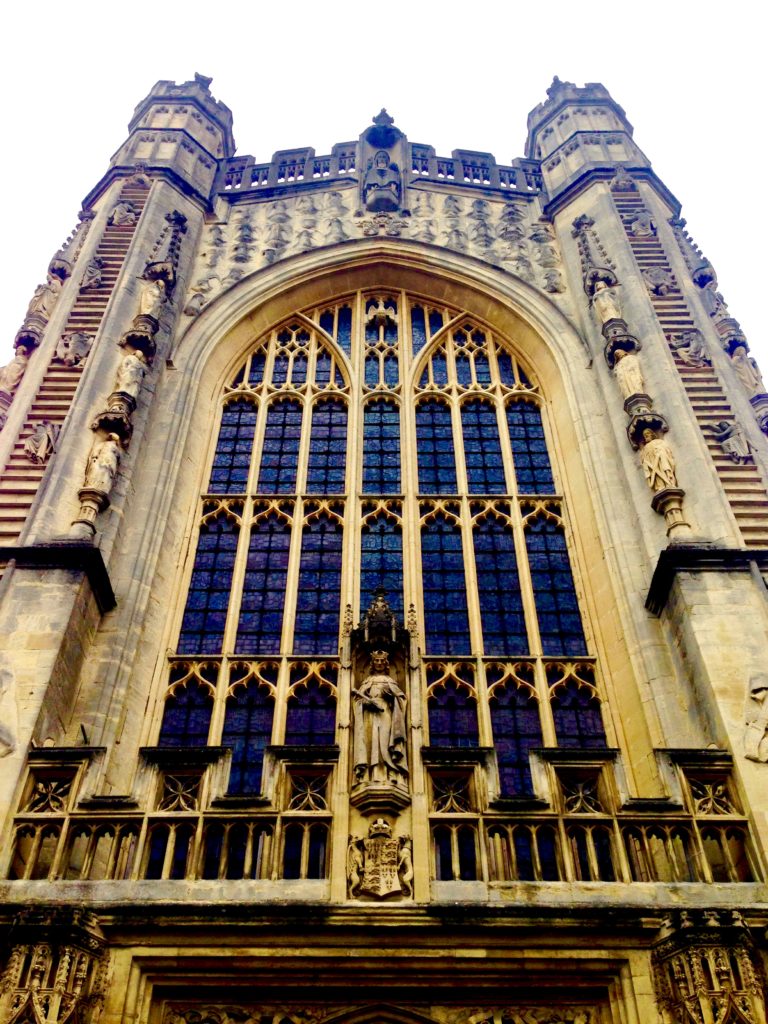
However, during Henry VIII’s dissolution of the monasteries in 1539, the valuable parts of the building were taken away, including the beautiful stained glass window, the roof was stripped for lead whilst the church’s glass and iron were also stolen. Imagine what we could have learnt from them! Instead, the Abbey was again left to decay. But in 1574, Queen Elizabeth I promoted the restoration of the church and she brought back the integrity of the church we have today!
What does Bath Abbey mean in today’s society?
The diverse history that Bath Abbey brings to the community is testament enough to its magnificence. It holds a prominent position within, not only Bath but within the United Kingdom. It reminds us of our heritage. This working church allows people to meet for services every week, proving just how special a place Bath Abbey is! See it for yourselves. I promise you, you will find history, culture, architecture and art. It will amaze the eye and boggle the brain (in a good way).
Finally, if you enjoyed this post, check out some of my articles on Bath’s Prior Park Landscape Garden and Reasons to visit Bath. And be sure to subscribe to my blog so you don’t miss out on another inspiring travel article!


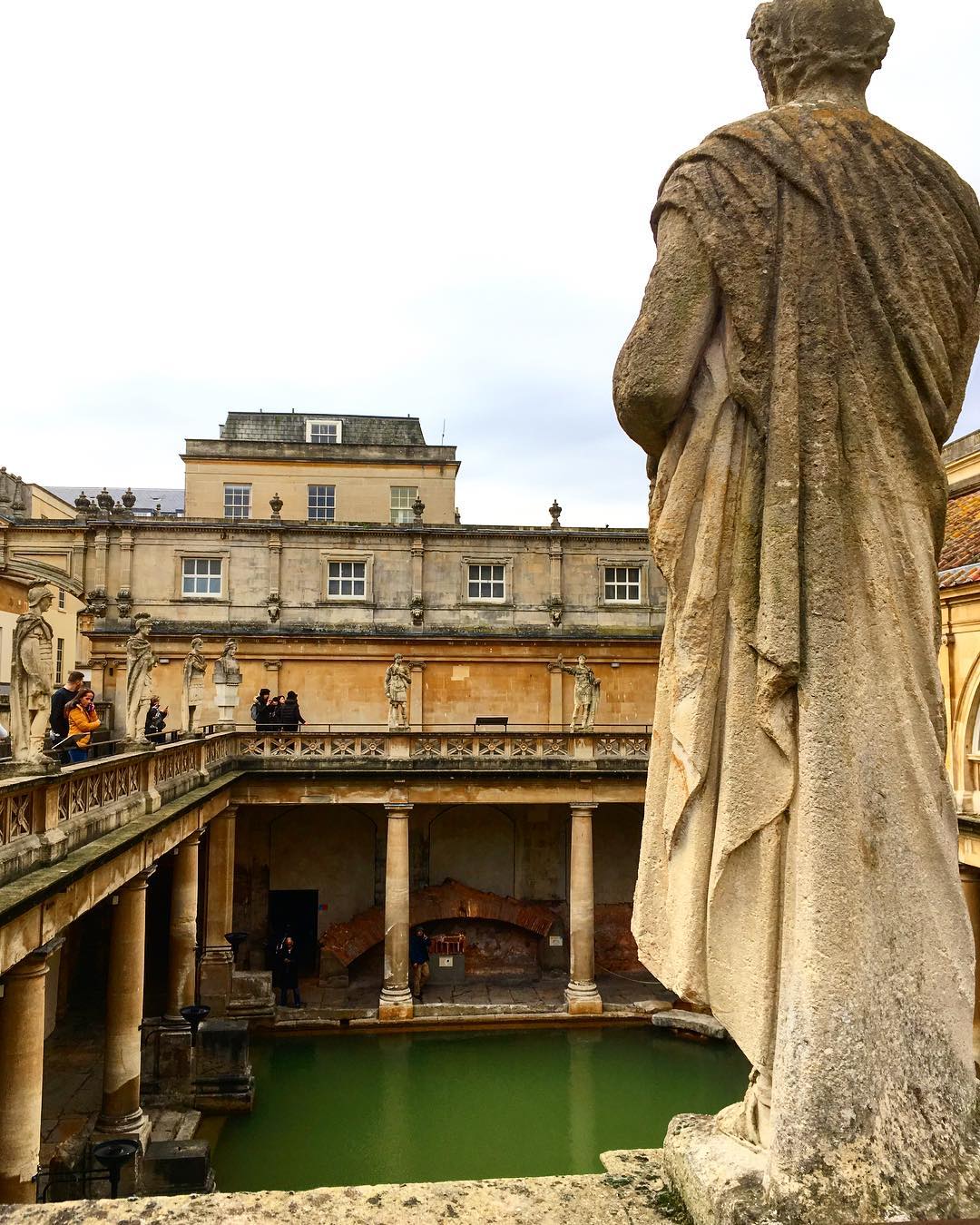
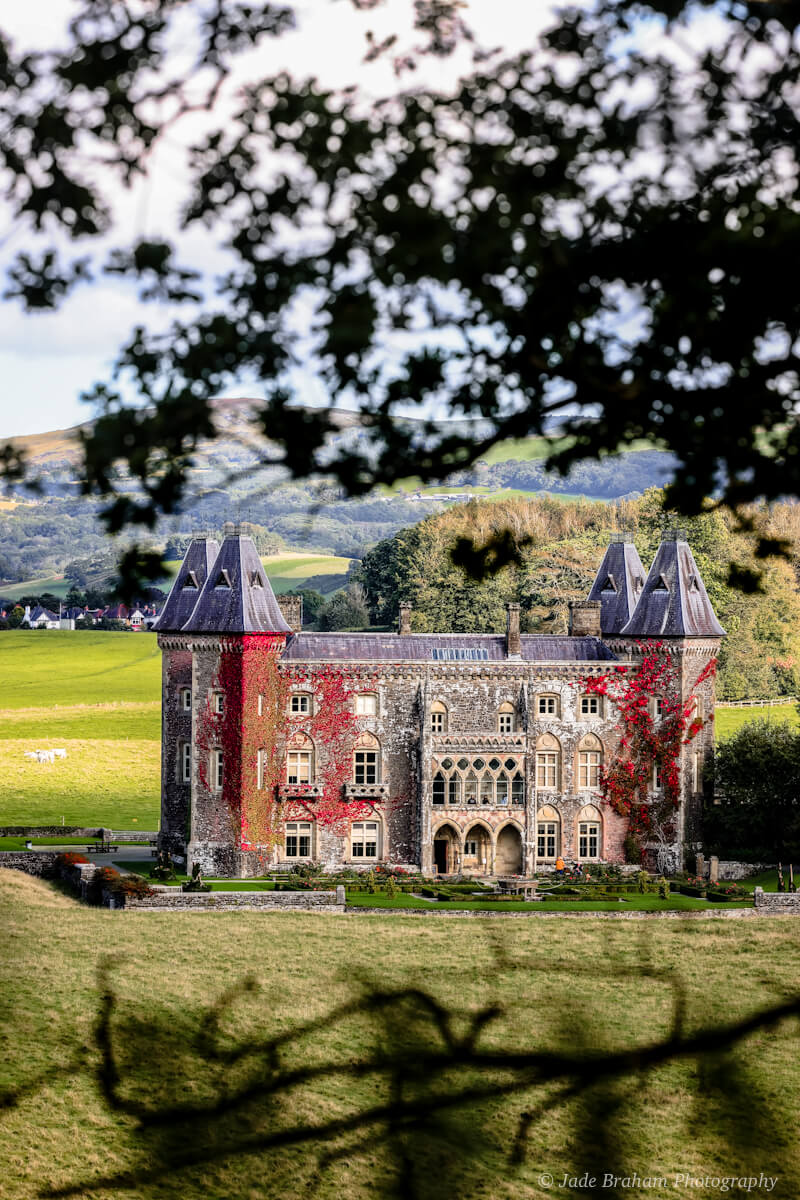
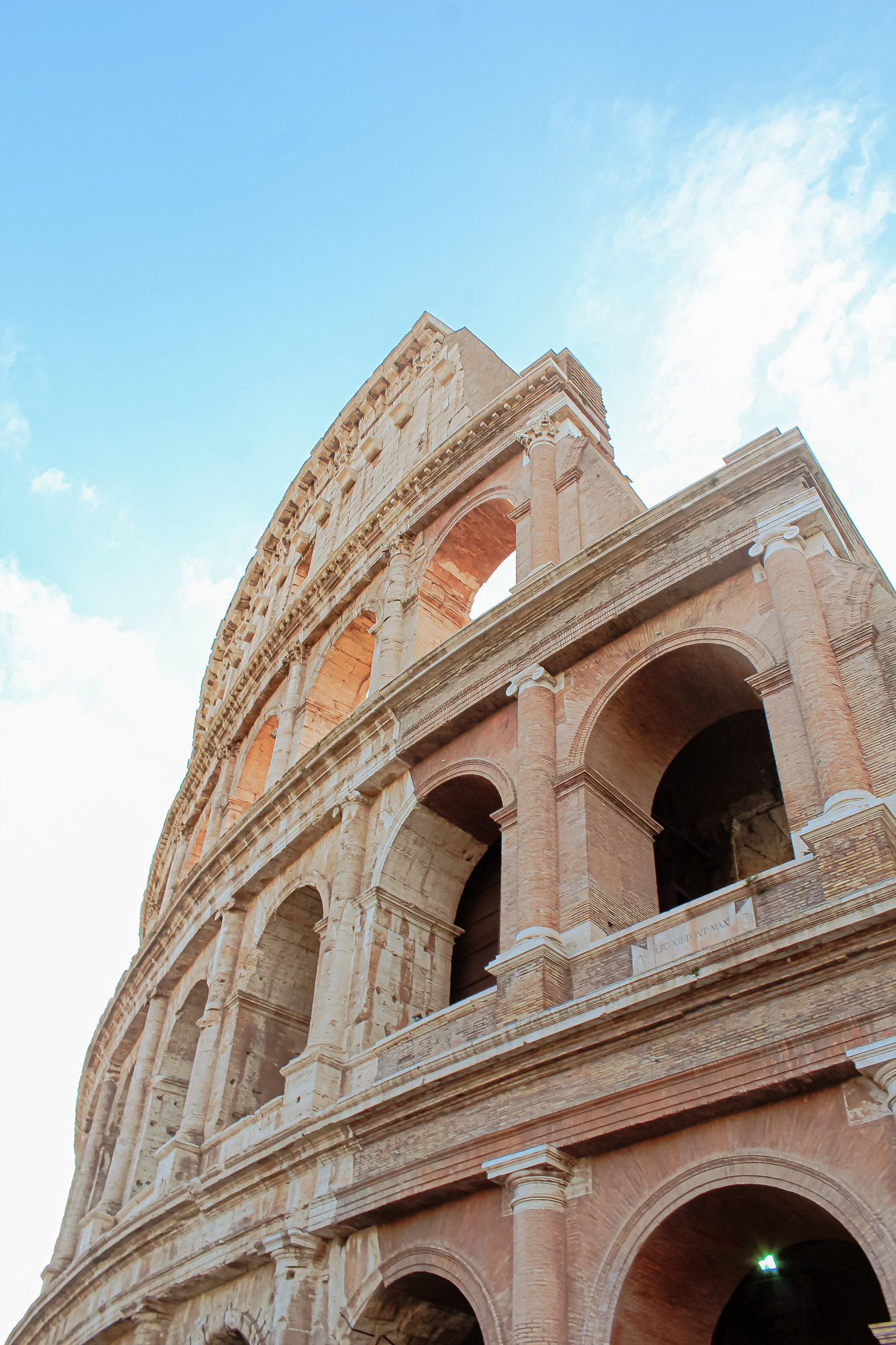
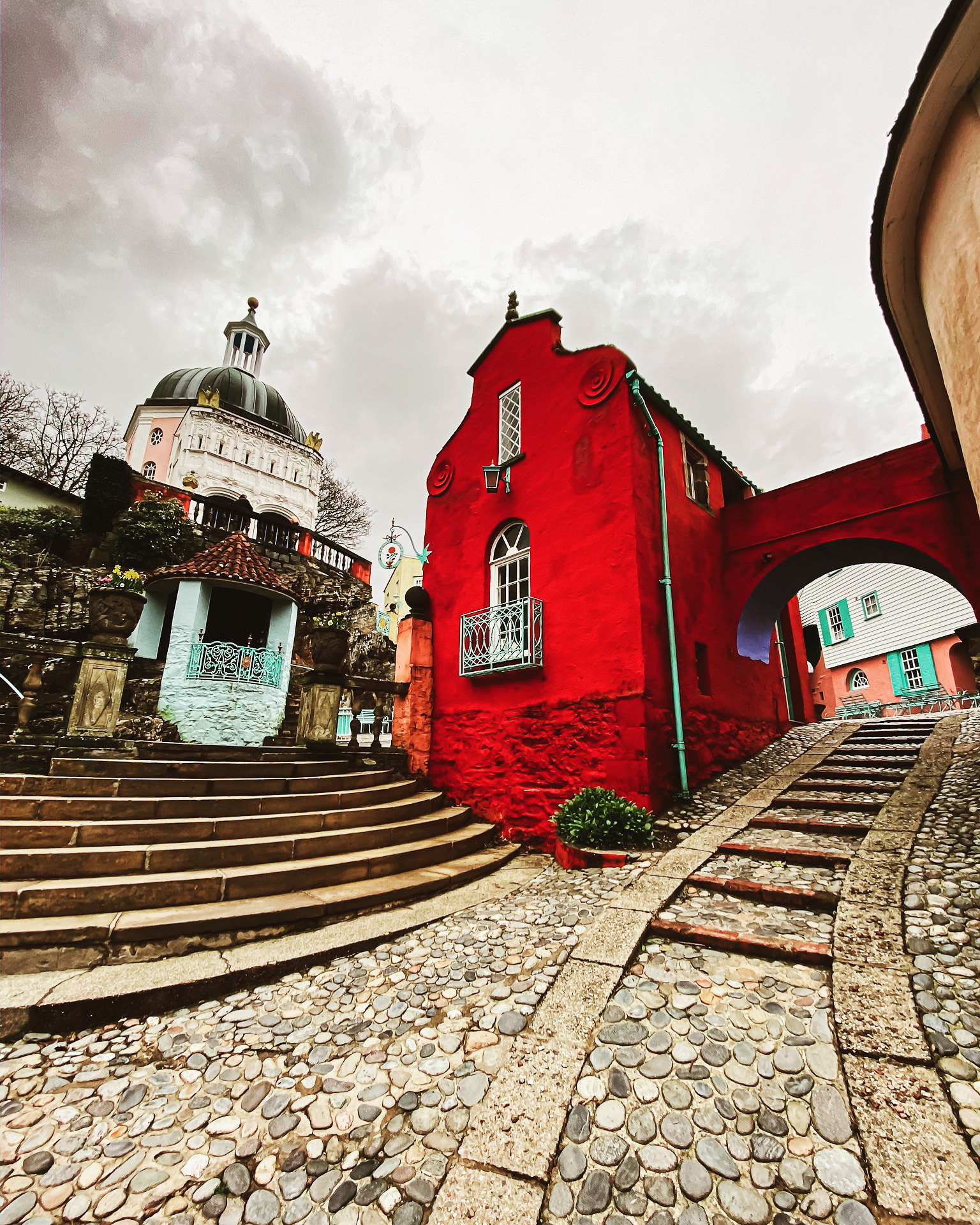
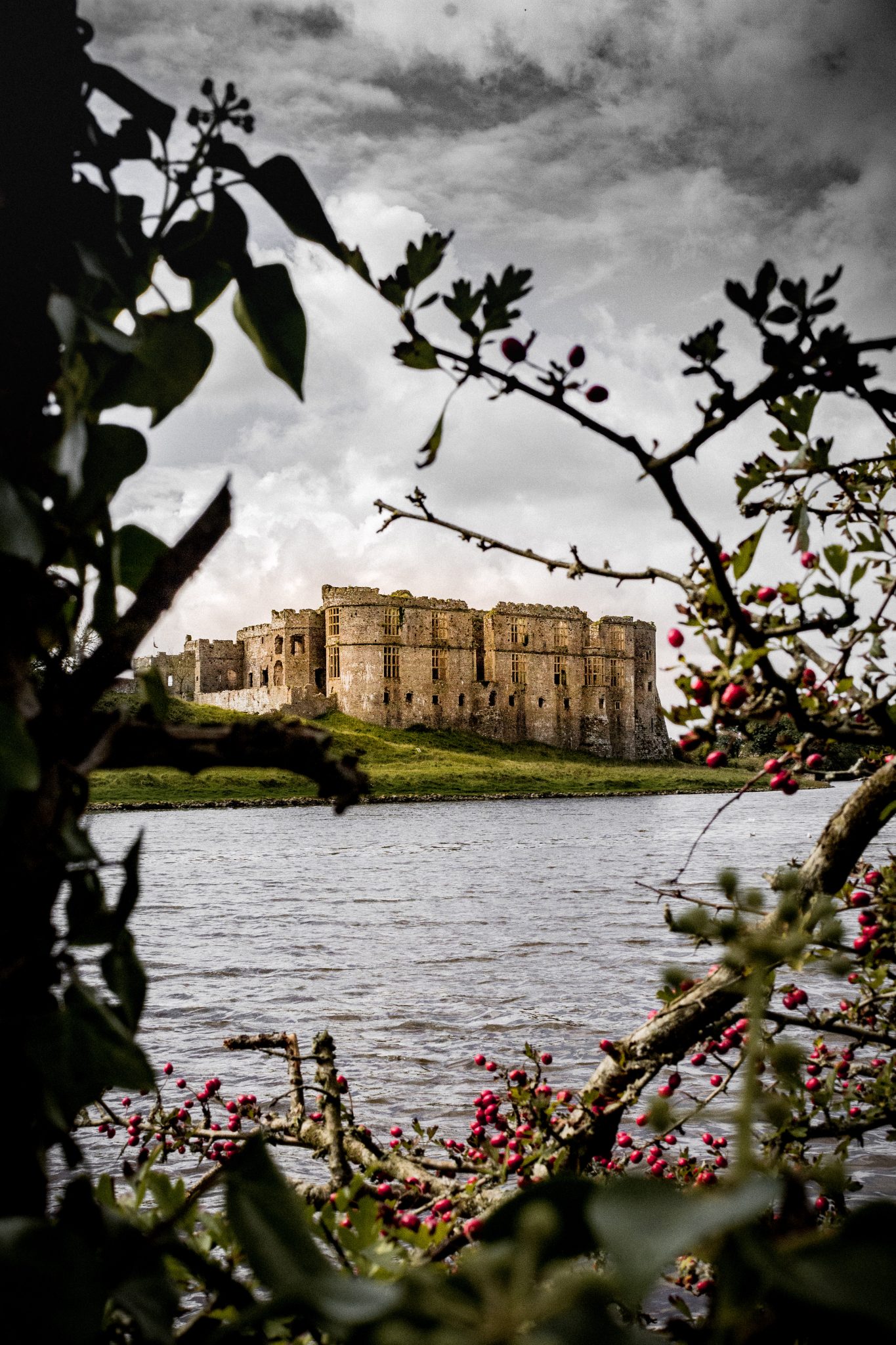
Looking at you page i thought Heart of Bath Abbey was a movie star but when i scroll down i saw it a place of worship..i must confess the building is a nice one.
Thank you! It’s an incredible place to visit!
Fascinating history of the Bath Abbey. Your pictures capture a beauty that I hope I can one day see firsthand.
Yes you should go! And if you get a chance you should also go to Bristol City Cathedral! It is equally fascinating. 🙂
What a beautify abbey, I have not been to Bath in years I do remember going here when I was little as we had family who lived there. We often talk about going there for a long weekend x
I too have many memories in Bath! I am writing a post about the top things to do in Bath, so watch out for that post as it might be useful to you. But in the meantime I have a post that shows you what you can do in Bath – it’s titled ‘A Trip to Bath in 25 Photos’! I hope this inspires you to have your long weekend. You’ll love it there. x
Very beautiful place! I love these mosaic windows! Thank you for sharing!
Thank you 🙂 The mosaic windows are even more impressive when you’re there and up close!
Bath is one of my most favorite places to visit in UK – as you know it’s so historic and those architecture. Your pictures are stunning!
Thank you! I love Bath too! I do try to capture the essence and quality of the city in my pictures so I am glad you liked them 🙂
nice post! great photos! i love BATH and all the great architecture and history and literary significance. do they still have the big giant cross filled w/ sand in the square?
Joy at The Joyous Living
Thank you so much! Yes I love Bath too…if you couldn’t already tell 🙂 They didn’t have the cross in the square last time but there is always something going on. Last time I had dinner on the square as the sun was setting and there was an opera singer, an artist and another street artists levitating! It’s really a magical place!
Wow, Bath Abbey is beautiful! I would love to see it in person. Those stain glass windows are breathtaking!
Yes, the stained glass window is incredible! Thank you for your wonderful feedback!
It looks humongous! I bet it feels differently when you are there in person. Looking forward on seeing the place first hand.
When you do get to see it, let me know what you made of it! I’d love to hear your thoughts!
I remember my history class, and it brings back memories. Thanks for sharing.
Great historical place to visit. I would love to visit the place again next with my family. Your pictures are very stunning 🙂
I have never been there but that is definitely a beautiful and an amazingly historical place to visit. The architectural designs are so great and I actually wanna be there someday!
Thank you so much! I really hope you get to go there some day 🙂
Bath Abbey is absolutely stunning! The architecture and the stain glass windws are truly beautiful. I’d love to visit it someday.
Bath Abbey is just beautiful! I have never been but would love to go someday, especially after knowing a little bit of the history you have shared here. I am sure the pictures do not do it justice, hard to capture the essence of a place in pictures. But it still looks amazing!
Amazing history here. I have never heard of Bath Abbey before. It looks very beautiful.
How wonderful to hear the history behind it. The architecture and design is extraordinary; just gorgeous.
Breathtakingly beautiful!!! Just look at the stone and cuts, the windows and the architecture in general! It’s even more amazing to learn that it’s such an old building that’s still standing beautifully.
Bath Abbey is an old gold indeed!
It’s remarkable designed for me to have a web site, which is useful for my
know-how. thanks admin
Hello to every one, the contents present at this web site are
truly remarkable for people experience, well, keep up the
good work fellows.
Thank you so much for your kind words!